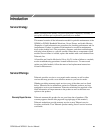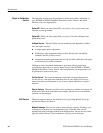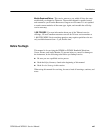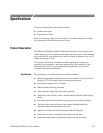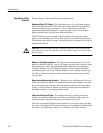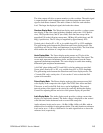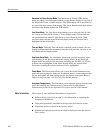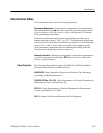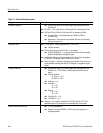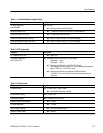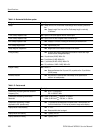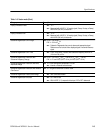
Specifications
1–2
WFM 90 and WFM 91 Service Manual
The key features of this instrument are described below:
Rasterized Color LCD Display. This instrument uses a color, four-inch diagonal,
backlit, thin-film transistor (TFT) LCD raster display module. The proprietary
rasterizer displays analog waveforms or vectors simultaneously with the
appropriate measurement graticules. A viewing-angle control for the display
permits optimal signal viewing from different positions.
The LCD display retains an image if the instrument is left on in one display
mode for an extended period of time. This is typical for the LCD display device.
The retained image fades over time. The fading can be accelerated by leaving the
instrument turned off.
CAUTION. To prevent image retention in the LCD display, enable the backlight
time-out mode or turn the instrument off if the monitor will not be used for more
than two hours.
Battery or AC Adapter Operation. The instrument can be powered by six C-cell
batteries, alkaline or NiCad, or by an AC adapter wall unit with a negative center
lead producing 12 VDC. The rechargeable NiCad batteries are automatically
recharged when the 12 VDC adapter is plugged into the instrument (whether
instrument power is on or off). Alkaline batteries do not recharge. The message
Low Bat is displayed in the on-screen readout when the batteries get critically
low on power.
Menu-Assisted Monitoring Operation. The menus use a combination of on-screen
readout and multi-use buttons, in conjunction with the Arrow Buttons, to control
most of its monitoring functions. Enter the menus by pressing one of the Menu,
Config, or Line Sel buttons. Menus are exited by pressing the entry button for
the displayed menu, or by entering another menu.
Video and Audio Input/Output. The instrument displays signals from the one
channel of composite video input or from the one channel of audio input. An
external reference input allows the use of an external sync signal.
The video and external reference inputs each have a rear-panel switch providing
the choice of an internal 75 W signal termination or an unterminated high-imped-
ance input. The audio input connector is a standard 3-pin XLR connector.
Description of Key
Features




